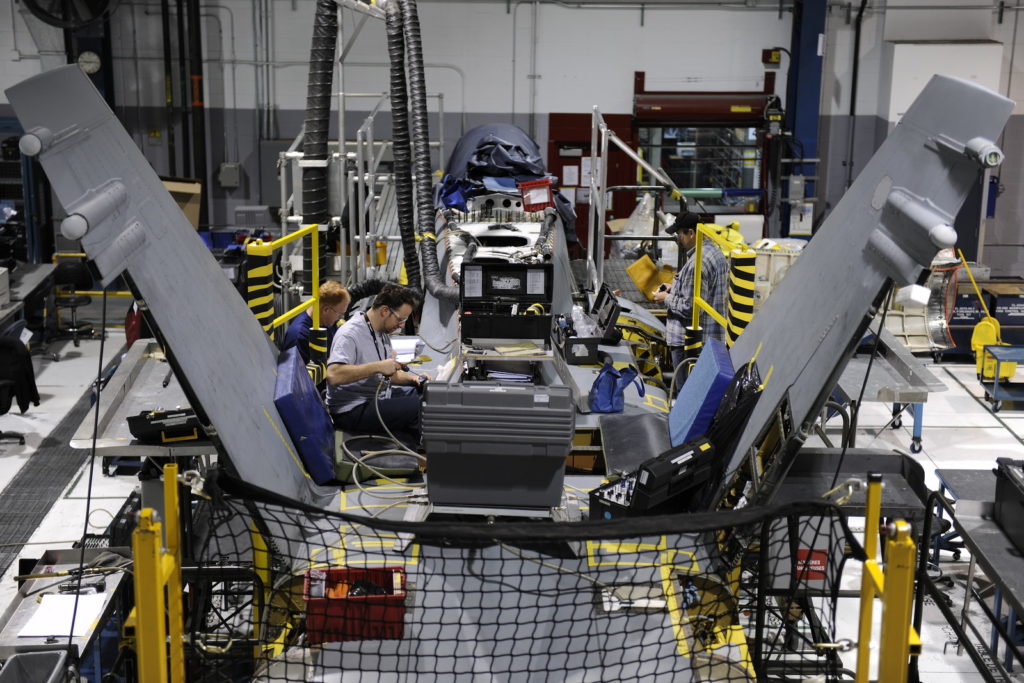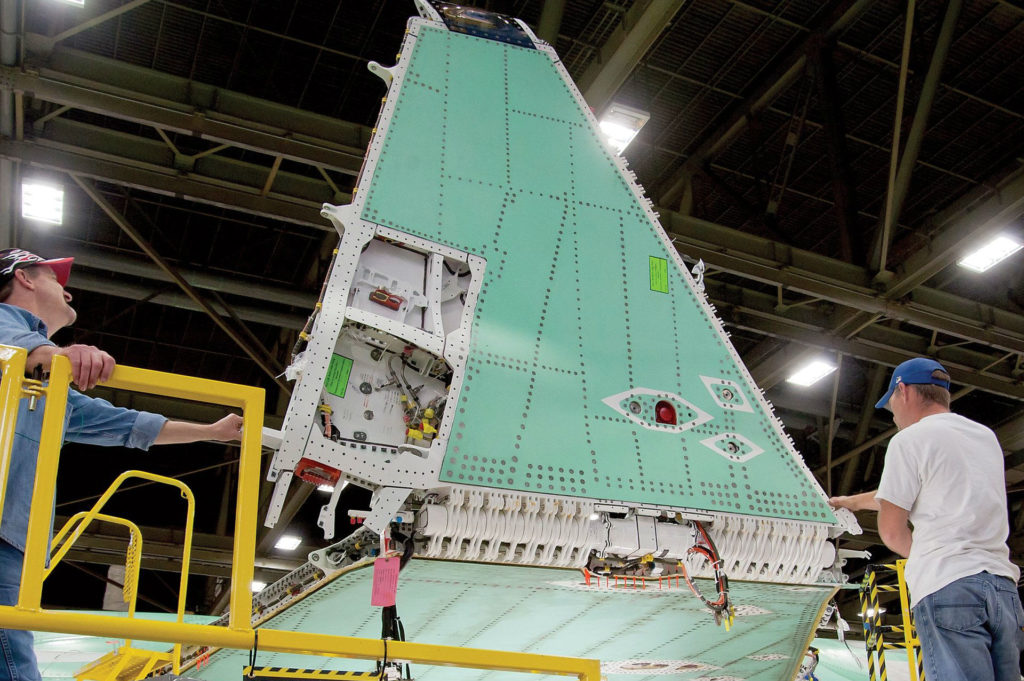Estimated reading time 7 minutes, 14 seconds.
Aerospace companies, airlines and industry associations are calling on the federal government to collaborate on an industrial strategy to help the sector battle the economic fallout of the coronavirus pandemic.

The aerospace sector generates over $25 billion in GDP and $1.4 billion in research and development and supports more than 215,000 jobs, according to the Aerospace Industries Association of Canada (AIAC). That makes it well positioned to help with an economic recovery as the government faces a $343 billion deficit in 2020.
“If there is any industry … able to create good paying jobs and prosperity, we’re it,” Jean Charest, former premier of Quebec and deputy prime minister of Canada and the chair of AIAC’s Vision 2025 initiative, reminded federal and provincial governments during a press conference on July 9.
While the Canadian sector has been at the forefront of industrial innovation, including the adoption of advanced manufacturing, and is currently ranked fifth among global aerospace producers, according to AIAC, that position is at risk without government support.
“The federal government’s lack of a sector strategy for this important industry is putting jobs at risk and threatening Canada’s global standing,” said Mike Mueller, AIAC senior vice-president.
Aerospace analysts have long been predicting “slippage” as other countries expand their stake in the sector or seek to establish a foothold. The urgent call for financial aid, though, is predicated by the actions of the U.S., Europe and other jurisdictions that have recently launched programs specifically for their aviation companies.
“Many foreign governments acted months ago to come to the aid of their aviation industries,” said John McKenna, president and chief executive officer of the Air Transport Association of Canada (ATAC).
Government programs introduced in the past months to alleviate some of the strain on Canadian businesses are first phase “survival” packages general to all industries.
Other countries have “moved to the second phase, which is programs to stimulate industry,” noted Charest. “Canada is lagging way behind in doing that. And the companies that do business here, they do business in other countries. They are well able to compare what kind of support governments are offering them in other jurisdictions.”

In addition to losing businesses, Canadian aviation is at risk of losing skilled labour to other jurisdictions if companies can’t get back on their feet relatively quickly, added McKenna. “They are going to work elsewhere if they can’t work here.”
AIAC has long been calling for an aerospace and defence industrial strategy that would guide investments and strengthen the supply chain to compete globally. That position was reaffirmed in Vision 2025, a report prepared by Charest and released at the Paris Air Show in June 2019.
It offered recommendations centred on six core themes: expanding the skilled workforce; growing small and medium sized enterprises (SMEs); promoting innovation; investing in Transport Canada’s aircraft certification and regulation capacity; sustaining Canadian leadership in space; and better leveraging defence procurement to drive industry growth.
During the 2019 election campaign, AIAC hosted three all-candidates town halls moderated by Charest in Vancouver, Toronto and Montreal, to draw attention to the sector’s concerns and the report’s recommendations.
“The nexus of the issue is that there is no sector-specific policies from the Government of Canada for this industry. We have been making that point over and over again,” said Charest. “I’m sorry to report the government is not reacting to that.”
He called the government’s response to Vision 2025 “timid” and “disappointing.”
“Our competitors are much more aggressive than they were in the past. We have much more competition than we ever did. Emerging economies want a piece of this industry,” he said.

A key reason for the strategy is to better leverage the modest government spending on defence projects for small and medium businesses. “We don’t have the defence spend that exists in the United States and Europe, and the R&D associated with that that is then transferred over to the civil side. We don’t have that advantage,” said Charest. “So we have been saying to the government, you need to have a sector-specific approach to send the right signal to the marketplace.”
Facing both short-term survival and longer-term uncertainty in the marketplace, Canadian airlines, especially regional carriers, are asking for immediate help with liquidity, better conditions for government loans, and a break on airport fees.
“There is an urgent need to move quickly in order to stabilize all sectors of Canadian commercial aviation to prevent insolvency and massive job losses,” said ATAC’s McKenna, whose association represents about 75 operators.
Without assistance, the recent closure of stations at regional airports and suspensions of domestic routes could be just the first wave of cuts, resulting in far fewer direct flights between Canadian and international cities.
“We can expect Canadians will endure even more air services reductions, particularly in smaller communities and remote regions, unless the government steps in,” concluded McKenna.









The Canadian aerospace industry has been bleeding for years through US and foreign country acquisitions of our small to medium-sized aerospace parts manufacturers. Although the Federal government has poured millions of dollars into supporting our aerospace businesses with loans and offset programs, it has not curtailed the exodus of manufacturers and MRO’s lower-cost offshore centres.
Canada needs a new aerospace and automotive business development strategy.
The loss of Bombadier and GM should have been our wake up call!